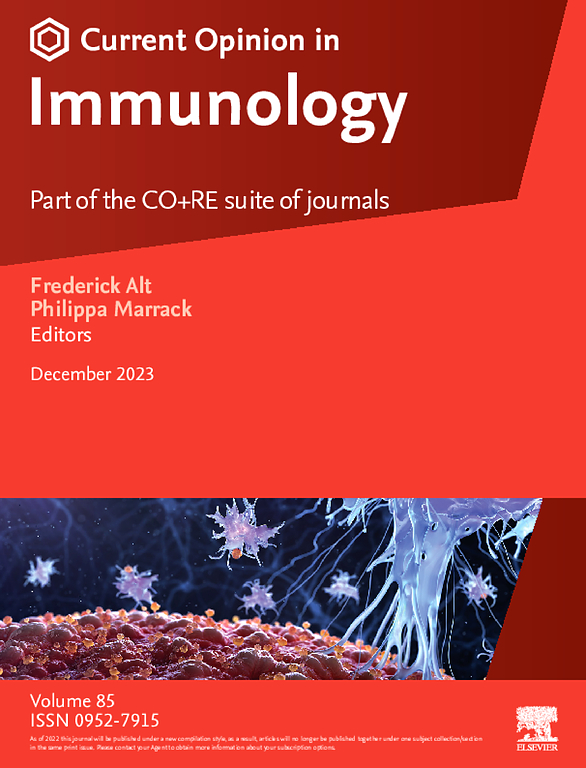Nucleic acid triggers of autoimmunity and autoinflammation
IF 6.6
2区 医学
Q1 IMMUNOLOGY
引用次数: 0
Abstract
The key role of nucleic acid sensing receptors in the development of autoimmune and autoinflammatory diseases is becoming increasingly apparent. Activation of these sensors has been attributed to the failure of professional scavenger cells to adequately clear cell debris, in many cases due to defective scavenger receptors. However, as now summarized in this review, numerous gain-of-function mutations in the nucleic acid sensing receptors, or in molecules that regulate sensor activity, have now been evaluated in gene-targeted murine strains, and critical components of their downstream pathways have been identified as therapeutic targets. In addition, we are beginning to understand how DNases and RNases play crucial roles in both generating and eliminating the distinct ligands that engage the various nucleic acid sensors. Murine models of disease have further provided important insights regarding the function of and synergy between individual endosomal and cytosolic receptors, as well as cell type restricted functions.
核酸触发自身免疫和自身炎症。
核酸感知受体在自身免疫和自身炎症疾病发展中的关键作用越来越明显。这些传感器的激活归因于专业清除细胞未能充分清除细胞碎片,在许多情况下是由于有缺陷的清除受体。然而,正如本文所总结的那样,在基因靶向的小鼠品系中已经评估了核酸感知受体或调节传感器活性的分子中的许多功能获得突变,并且已经确定了其下游途径的关键组分作为治疗靶点。此外,我们开始了解dnase和rnase如何在产生和消除与各种核酸传感器结合的不同配体中发挥关键作用。小鼠疾病模型进一步提供了关于单个内体和细胞质受体的功能和协同作用以及细胞类型限制功能的重要见解。
本文章由计算机程序翻译,如有差异,请以英文原文为准。
求助全文
约1分钟内获得全文
求助全文
来源期刊
CiteScore
13.30
自引率
1.40%
发文量
94
审稿时长
67 days
期刊介绍:
Current Opinion in Immunology aims to stimulate scientifically grounded, interdisciplinary, multi-scale debate and exchange of ideas. It contains polished, concise and timely reviews and opinions, with particular emphasis on those articles published in the past two years. In addition to describing recent trends, the authors are encouraged to give their subjective opinion of the topics discussed.
In Current Opinion in Immunology we help the reader by providing in a systematic manner: 1. The views of experts on current advances in their field in a clear and readable form. 2. Evaluations of the most interesting papers, annotated by experts, from the great wealth of original publications.
Current Opinion in Immunology will serve as an invaluable source of information for researchers, lecturers, teachers, professionals, policy makers and students.
Current Opinion in Immunology builds on Elsevier''s reputation for excellence in scientific publishing and long-standing commitment to communicating reproducible biomedical research targeted at improving human health. It is a companion to the new Gold Open Access journal Current Research in Immunology and is part of the Current Opinion and Research(CO+RE) suite of journals. All CO+RE journals leverage the Current Opinion legacy-of editorial excellence, high-impact, and global reach-to ensure they are a widely read resource that is integral to scientists'' workflow.

 求助内容:
求助内容: 应助结果提醒方式:
应助结果提醒方式:


